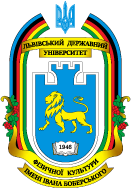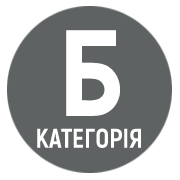PHYSICAL EDUCATION AND SPORT IN THE LIFE OF FIRST-YEAR STUDENTS
DOI:
https://doi.org/10.32782/2221-1217-2025-1-22Keywords:
professional activity, lawyers, motivation, health, attitude, collegeAbstract
The aim of the study is to determine the current state of motivation of future lawyers to physical education and sports. 51 students (aged 15.6±1.2 years) participated in the online survey among them 26 boys and 25 girls of the first year of full-time study at the Lviv Professional College of Economics and Law. The survey was anonymous and consisted of 21 questions, some of which were answered on a fivepoint scale, and most of the questions had multiple-choice answers. It was found that students – future lawyers – do not consider regular physical education and sports classes to be important for successful work in their specialty (64.8%). However, (51.2%) consider the amount of physical activity that they receive in physical education classes once a week to be insufficient. They consider it necessary to engage in various forms of physical exercise at least three times a week. It was found that lack of free time is the main reason that prevents students from engaging in sports clubs (52.9%). However, 66.7% of students spend their free time passively, although they spend no more than 10 hours a week on homework (74.5%). Priority sports were identified. Students' needs for improving their health (72.5% and 70.6%), increasing their level of physical fitness and working capacity (62.7% and 60.8%), psycho-emotional and mental relief (60.8% and 33.3%), and communication with friends (52.9%) serve as incentives to increase their physical activity. One of the effective ways to improve the educational process of training future lawyers (76.5%) can be the organization and regular holding of competitions, entertainment, and fun using outdoor and sports games.
References
1. Ажиппо О.Ю., Криворучко Н.В. До питання підвищення інтересу студентів до занять фізичного виховання. Актуальні проблеми фізичного виховання різних верств населення : матеріали ІІ Всеукраїнської науково-практичної конференції. Харків : ХДАФК, 2016. С. 6–11.
2. Гаркуша В.В. Сформованість навичок здоров’язбереження у сучасної студентської молоді. Вісник Чернігівського національного педагогічного університету. Сер. : Педагогічні науки. Фізичне виховання та спорт. 2014.Вип. 118(3). С. 62–65.
3. Гунько ПМ. Ставлення студентської молоді з різним рівнем фізичної підготовленості до фізкультурно-оздоровчої діяльності. Педагогіка, психологія та медико-біологічні проблеми фізичного виховання і спорту. 2009 URL: https://sportpedagogy.org.ua/html/journal/2009-06/09gpmhwl.pdf
4. Захарченко, М. Формування мотивації до занять з фізичного виховання юнаків і дівчат. Фізична культура, спорт та здоров’я нації. 2017. № 3 (22). С. 82–87.
5. Земська Н.О. Ставлення студентів до фізичного виховання і спорту. Слобожанський науково-спортивний вісник : наук.-теор. журн. Харків : ХДАФК, 2012. № 5. Ч. 1. С. 2–30.
6. Кенсицька І. Модель формування цінностей здорового способу життя студентів у процесі фізичного виховання. Теорія і методика фізичного виховання і спорту. 2017. № 4. С. 69–76. URL: http://nbuv.gov.ua/UJRN/TMFVS_2017_4_14
7. Коломієць, А., Золочевський, В., Русанов, М. Дослідження стану формування здорового способу життя студентів педагогічного коледжу. Вісник Харківського національного університету імені В. Н. Каразіна. Серія «Валеологія: сучасність і майбутнє». 2015. № 19(1149). С. 85. URL: https://periodicals.karazin.ua/valeology/article/view/4589.
8. Костенко М.П. Професійно-орієнтоване фізичне виховання юристів : навчально-методичний посібник. Київ : НУБіП України, 2020. 164 с.
9. Петренко О. Вивчення ставлення студенток економічної спеціальності до занять з фізичного виховання. Молода спортивна наука України : зб. наук. пр. з галузі фіз. виховання, спорту і здоров'я людини / за заг. ред. Є. Приступи. Львів, 2014. Вип. 18. Т. 2. С. 98–101.
10. Пільова С.Г. Роль фізичної культури у житті студентів інституту мов світу. Слобожанський науково-спортивний вісник. 2013. № 3. С. 216–219. URL: http://nbuv.gov.ua/UJRN/snsv_2013_3_54
11. Соломонко А.О. Професійно важливі психофізичні якості юриста. Науковий часопис НПУ ім. М. П. Драгоманова. Серія 15 : Науково-педагогічні проблеми фізичної культури (фізична культура і спорт) : зб. наук. пр. Київ, 2021. Вип. 4K (132) 21. С. 168–173.
12. Barani G. and Pavithra Sabapathy Department of Management Studies, Anna University Regional Centre Coimbatore, Coimbatore, Tamil Nadu 641-646;2015.
13. Bodnarchuk, O., Stefanyshyn, V., & Malanchuk, G. (2017). Dynamic of primary school age pupils’ physical fitness. Pedagogics, Psychology, Medical-Biological Problems of Physical Training and Sports, 21(4), 152-156. https://doi.org/10.15561/18189172.2017.0401. DOI: https://doi.org/10.15561/18189172.2017.0401
14. Guthold R, Stevens GA, Riley LM, Bull FC. Worldwide trends in insufficient physical activity from 2001 to 2016: a pooled analysis of 358 population-based surveys with 1.9 million participants. Lancet Glob Health. 2018; 6 (10): e1077–e1086. PubMed ID: 30193830 doi:10.1016/S2214-109X(18)30357-7. DOI: https://doi.org/10.1016/S2214-109X(18)30357-7
15. Hallal PC, Andersen LB, Bull FC, Guthold R, Haskell W, Ekelund U. Global physical activity levels: surveillance, progress, pitfalls, and prospects. Lancet. 2012;380(9838):247-257. doi:10.1016/S0140-6736(12)60646-1. DOI: https://doi.org/10.1016/S0140-6736(12)60646-1
16. Lobo, J., & Dimalanta, G. (2024). Individual Interest of Students in Physical Education and School Engagement in Fostering Physical Culture inside the Campus: The Case of Two Prominent Local Colleges in Pampanga, Philippines. Journal on Efficiency and Responsibility in Education and Science, 17(1), 79-91. DOI: https://doi.org/10.7160/eriesj.2024.170107
17. Motivational determinants of physical education grades and the intention to practice sport in the future Luis Cid, Ana Pires, Carla Borrego, Pedro Duarte-Mendes, Diogo S. Teixeira, João M. Moutão, Diogo Monteiro Published: May 23, 2019 https://doi.org/10.1371/journal.pone.0217218. DOI: https://doi.org/10.1371/journal.pone.0217218
18. Hernández, Juan Antonio Moreno-Murcia, Lorena Ruíz González, and Jaime León González Int J Environ Res Public Health. 2019, 16(10), 1714. doi: 10.3390/ijerph16101714. DOI: https://doi.org/10.3390/ijerph16101714
19. Paffenbarger Jr., R.S. Hyde R.T. Wing A.L. Hsieh C.C. Physical activity, all-cause mortality, and longevity of college alumni. N Engl J Med. 1986; 314: 605-613. DOI: https://doi.org/10.1056/NEJM198603063141003
20. Trigueros, R., Mínguez, L. A., González-Bernal, J. J., Jahouh, M., Soto-Camara, R., & Aguilar-Parra, J. M. (2019). Influence of Teaching Style on Physical Education Adolescents’ Motivation and Health-Related Lifestyle. Nutrients, 11(11), 2594. https://doi.org/10.3390/nu11112594. DOI: https://doi.org/10.3390/nu11112594
21. Tudor-Locke, C., Craig, C. L., Beets, M. W., Belton, S., Cardon, G. M., Duncan, S., et al. (2011). How many steps/day are enough for children and adolescents? International Journal of Behavioral Nutrition and Physical Activity, 8, 78. https://doi.org/10.1186/1479-5868-8-78. DOI: https://doi.org/10.1186/1479-5868-8-78
22. Young people and physical activity: a systematic review matching their views to effective interventions Rebecca Rees, J Kavanagh, A Harden, J Shepherd, G Brunton, S Oliver, A Oakley Health Education Research, Volume 21, Issue 6, December 2006, Pages 806–825, https://doi.org/10.1093/her/cyl120. DOI: https://doi.org/10.1093/her/cyl120
23. Zanevskyy, I., & Bodnarchuk, O. (2020). A Model of Pedometer Determined Physical Activity in Primary School Children. Physical Education Theory and Methodology, 20(1), 18-24. https://doi.org/10.17309/tmfv.2020.1.03 DOI: https://doi.org/10.17309/tmfv.2020.1.03






